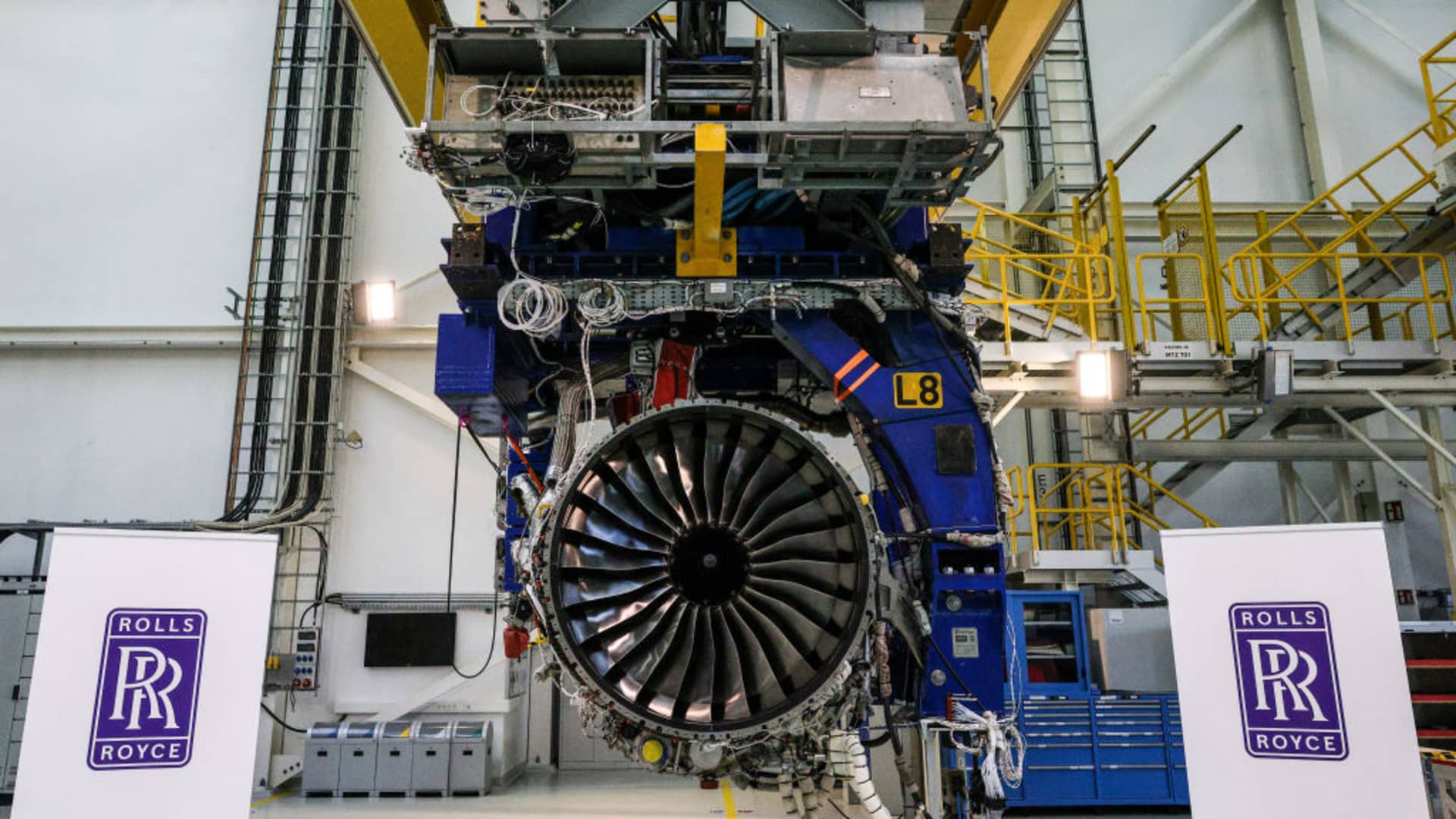LONDON — Shares of Rolls-Royce rocketed to their highest level since the start of the pandemic Wednesday morning after the British aerospace and defense firm raised its full-year profit guidance and said it would vastly outperform expectations for its half-year results.
The company said it now anticipates full-year underlying operating profit will sit between £1.2 billion ($1.55 billion) and £1.4 billion, up from a previous guidance of £800 million to £1 billion, as the impact of a vast cost-cutting and business “transformation” program takes effect earlier than predicted. Market consensus is currently for a £934 million underlying operating profit, the company said.
related investing news
It added that it sees its first-half underlying operating profit, due August 3, coming in at just over double analyst expectations of £328 million.
Rolls-Royce’s share price was 19% higher at 9:43 a.m. BST. The company’s shares have taken a battering over the last three years — at times even entering “penny stock” territory below £1 — largely because of the Covid-19 hit to the aviation sector, as well as the knock-on effects on aircraft orders and the number of hours its engines were in use.
Rolls-Royce makes engines for Airbus and Boeing.

The company cut around 8,500 jobs across 2020 and 2021, as it launched an extensive shake-up of its operations and department structures to improve profitability after slumping to a £4 billion loss for the 2020 financial year.
In the Wednesday’s update, the company said it expects half-year profits across its three main divisions of civil aerospace, defense and power systems.
“Our multi-year transformation programme has started well with progress already evident in our strong initial results and increased full year guidance for 2023,” said Rolls-Royce CEO Tufan Erginbilgic in a statement.
“There is much more to do to deliver better performance and to transform Rolls-Royce into a high performing, competitive, resilient, and growing business. Despite a challenging external environment, notably supply chain constraints, we are starting to see the early impact of our transformation in all our divisions. Better profit and cash generation reflects greater productivity, efficiency and improved commercial outcomes.”





